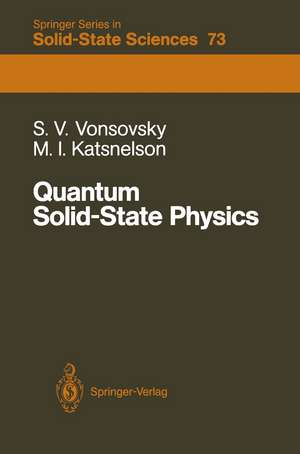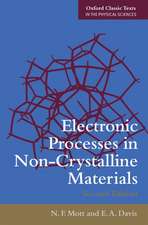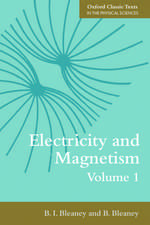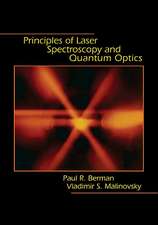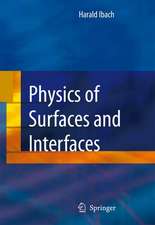Quantum Solid-State Physics: Springer Series in Solid-State Sciences, cartea 73
Autor Serghey V. Vonsovsky, Mikhail I. Katsnelsonen Limba Engleză Paperback – 5 mai 2012
Din seria Springer Series in Solid-State Sciences
- 18%
 Preț: 1225.94 lei
Preț: 1225.94 lei - 18%
 Preț: 1017.62 lei
Preț: 1017.62 lei - 15%
 Preț: 532.05 lei
Preț: 532.05 lei - 18%
 Preț: 944.51 lei
Preț: 944.51 lei -
 Preț: 541.46 lei
Preț: 541.46 lei - 18%
 Preț: 956.96 lei
Preț: 956.96 lei -
 Preț: 385.84 lei
Preț: 385.84 lei - 18%
 Preț: 1827.48 lei
Preț: 1827.48 lei - 15%
 Preț: 661.02 lei
Preț: 661.02 lei -
 Preț: 389.88 lei
Preț: 389.88 lei - 15%
 Preț: 639.59 lei
Preț: 639.59 lei - 15%
 Preț: 635.15 lei
Preț: 635.15 lei - 18%
 Preț: 896.21 lei
Preț: 896.21 lei - 15%
 Preț: 647.92 lei
Preț: 647.92 lei - 15%
 Preț: 651.34 lei
Preț: 651.34 lei - 18%
 Preț: 890.23 lei
Preț: 890.23 lei - 15%
 Preț: 640.55 lei
Preț: 640.55 lei - 15%
 Preț: 649.54 lei
Preț: 649.54 lei - 15%
 Preț: 645.60 lei
Preț: 645.60 lei - 15%
 Preț: 644.30 lei
Preț: 644.30 lei - 15%
 Preț: 653.79 lei
Preț: 653.79 lei - 18%
 Preț: 956.69 lei
Preț: 956.69 lei - 15%
 Preț: 637.59 lei
Preț: 637.59 lei - 23%
 Preț: 1043.41 lei
Preț: 1043.41 lei - 15%
 Preț: 639.08 lei
Preț: 639.08 lei - 15%
 Preț: 648.24 lei
Preț: 648.24 lei - 15%
 Preț: 637.46 lei
Preț: 637.46 lei - 15%
 Preț: 640.06 lei
Preț: 640.06 lei -
 Preț: 391.40 lei
Preț: 391.40 lei -
 Preț: 390.84 lei
Preț: 390.84 lei - 15%
 Preț: 638.57 lei
Preț: 638.57 lei - 18%
 Preț: 1006.06 lei
Preț: 1006.06 lei - 18%
 Preț: 730.79 lei
Preț: 730.79 lei - 15%
 Preț: 640.37 lei
Preț: 640.37 lei - 15%
 Preț: 643.65 lei
Preț: 643.65 lei - 18%
 Preț: 1231.01 lei
Preț: 1231.01 lei - 18%
 Preț: 950.21 lei
Preț: 950.21 lei - 15%
 Preț: 642.68 lei
Preț: 642.68 lei - 15%
 Preț: 640.55 lei
Preț: 640.55 lei - 18%
 Preț: 1229.10 lei
Preț: 1229.10 lei
Preț: 401.03 lei
Nou
Puncte Express: 602
Preț estimativ în valută:
76.74€ • 80.39$ • 63.60£
76.74€ • 80.39$ • 63.60£
Carte tipărită la comandă
Livrare economică 09-23 aprilie
Preluare comenzi: 021 569.72.76
Specificații
ISBN-13: 9783642501661
ISBN-10: 3642501664
Pagini: 520
Ilustrații: XII, 505 p. 60 illus.
Dimensiuni: 155 x 235 x 27 mm
Greutate: 0.72 kg
Ediția:1989
Editura: Springer Berlin, Heidelberg
Colecția Springer
Seria Springer Series in Solid-State Sciences
Locul publicării:Berlin, Heidelberg, Germany
ISBN-10: 3642501664
Pagini: 520
Ilustrații: XII, 505 p. 60 illus.
Dimensiuni: 155 x 235 x 27 mm
Greutate: 0.72 kg
Ediția:1989
Editura: Springer Berlin, Heidelberg
Colecția Springer
Seria Springer Series in Solid-State Sciences
Locul publicării:Berlin, Heidelberg, Germany
Public țintă
ResearchCuprins
1. Introduction. General Properties of the Solid State of Matter.- 1.1 General Thermodynamic Description of the Solid State.- 1.2 Crystal Structure of Solids.- 1.3 Reciprocal Lattice.- 1.4 Examples of Simple Crystal Structures.- 1.5 Experimental Techniques for Determining the Periodic Atomic Structure of Solids.- 1.6 Qualitative Concepts of the Electronic and Nuclear Crystal Structure.- 1.7 Fundamental Concepts of the Chemical Bonding in Solids.- 1.8 Types of Crystalline Solids.- 1.9 Formulation of the General Quantum-Mechanical Problem of the Crystal.- 1.10 Properties of Disordered Condensed Systems.- 2. Dynamic Properties of the Crystal Lattice.- 2.1 The Dynamics of the Ionic Lattice.- 2.2 The Specific-Heat Capacity of the Lattice.- 2.3 Allowance for Anharmonic Terms.- 2.4 Localization of Phonons on Point Defects.- 2.5 Heat Capacity of Glasses at Low Temperatures.- 2.6 High-Frequency Permittivity of Ionic Crystals.- 2.7 Lattice Scattering and the Mössbauer Effect.- 2.8 Conclusion.- 3. Simple Metals: The Free Electron-Gas Model.- 3.1 Types of Metals.- 3.2 Physical Properties of the Metallic State. Conduction Electrons.- 3.3 Classical Conduction-Electron Theory (Drude-Lorentz Theory).- 3.4 Itinerant Electron Theory According to Frenkel.- 3.5 Application of Fermi-Dirac Quantum Statistics to the Conduction-Electron Gas.- 3.6 Transport Phenomena.- 3.7 High-Frequency Properties.- 3.8 Conclusions.- 4. Band Theory.- 4.1 Preliminary Observations and the One-Dimensional Model.- 4.2 General Theory of the Electron Motion in a Three-Dimensional Crystal.- 4.3 Nearly-Free-Electron Approximation.- 4.4 Effect of an Electric Field on Electronic States.- 4.5 The Metal-Semiconductor Criterion.- 4.6 Computing the Electron Energy Spectrum of Crystals.- 4.7 Band Electrons in a Magnetic Field.- 4.8 Impurity States.- 4.9 The Electronic Structure of Disordered Systems.- 4.10 Conclusion. The Role of Many-Particle Effects.- 5. Many-Particle Effects.- 5.1 Plasma Phenomena. Screening.- 5.2 TheFermi-Liquid Theory.- 5.3 Electron-Phonon Interaction.- 5.4 Superconductivity.- 5.5 Excitons.- 5.6 Transition Metals and Their Compounds.- 5.7 Anderson’s Orthogonality Catastrophe.- 5.8 Conclusion.- Addenda (Recent Developments).- References.
